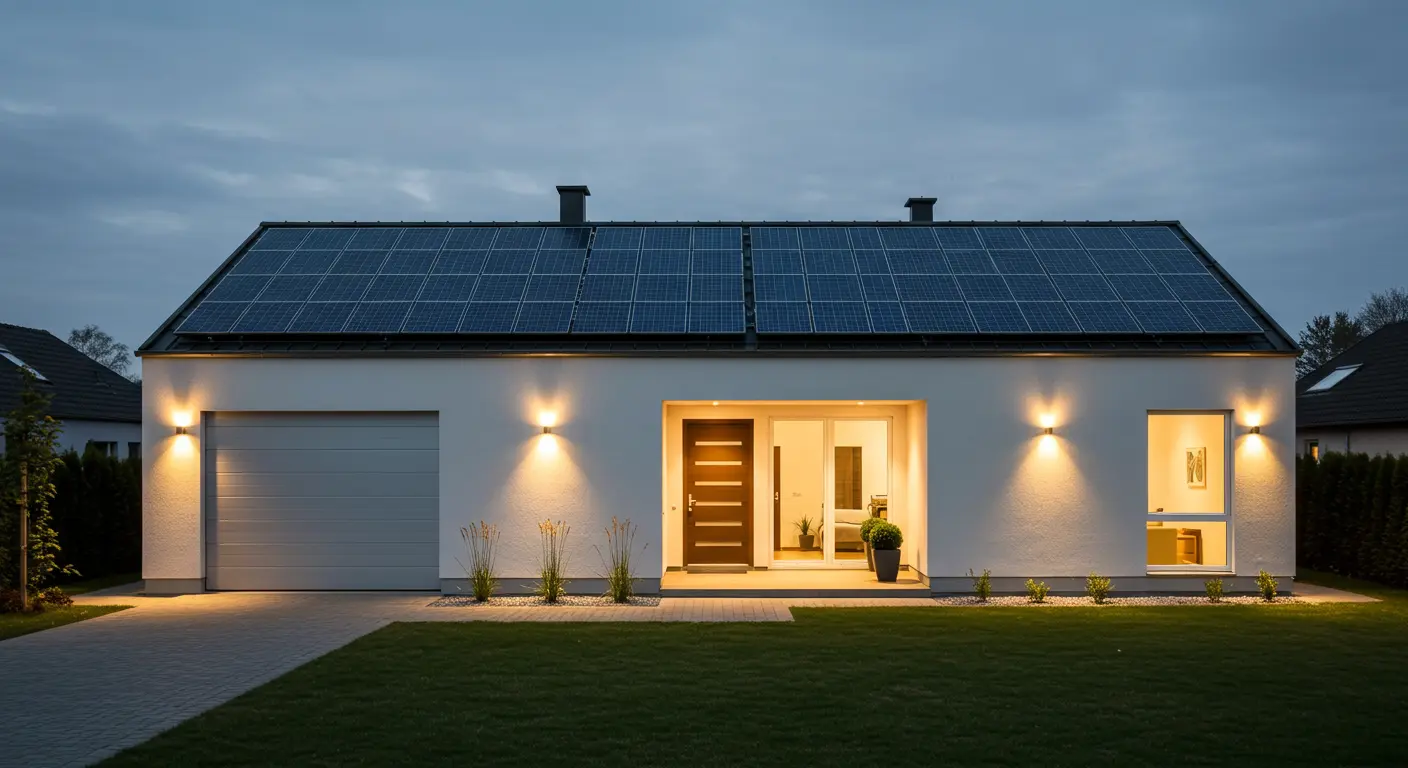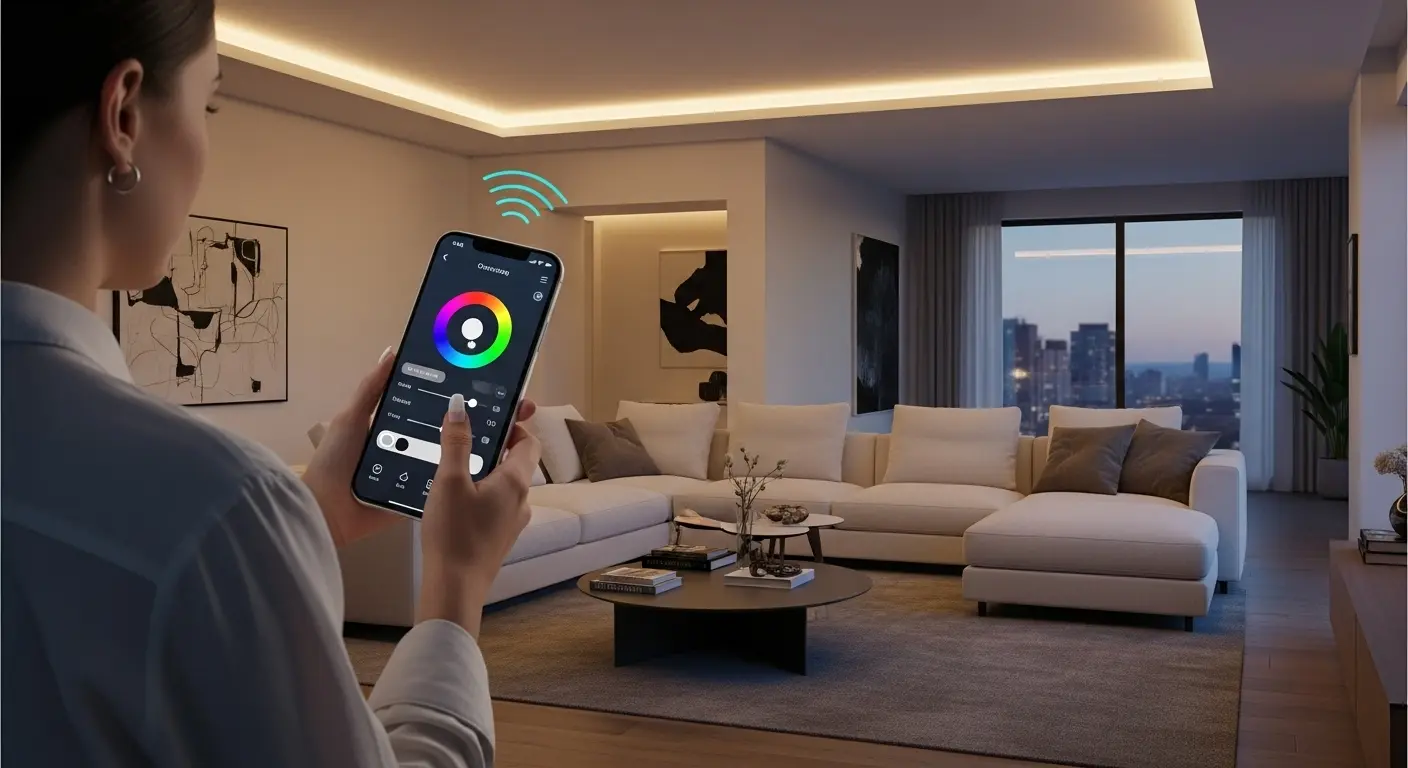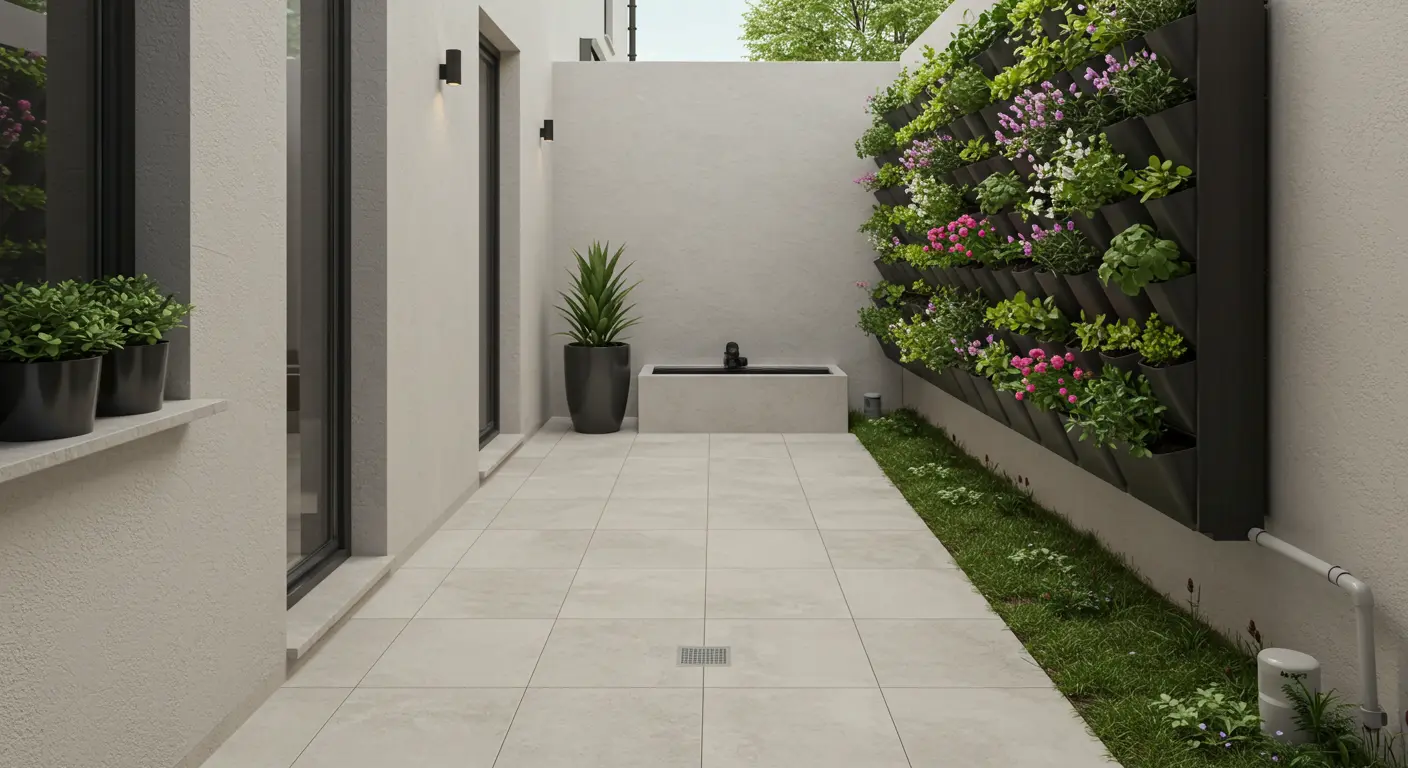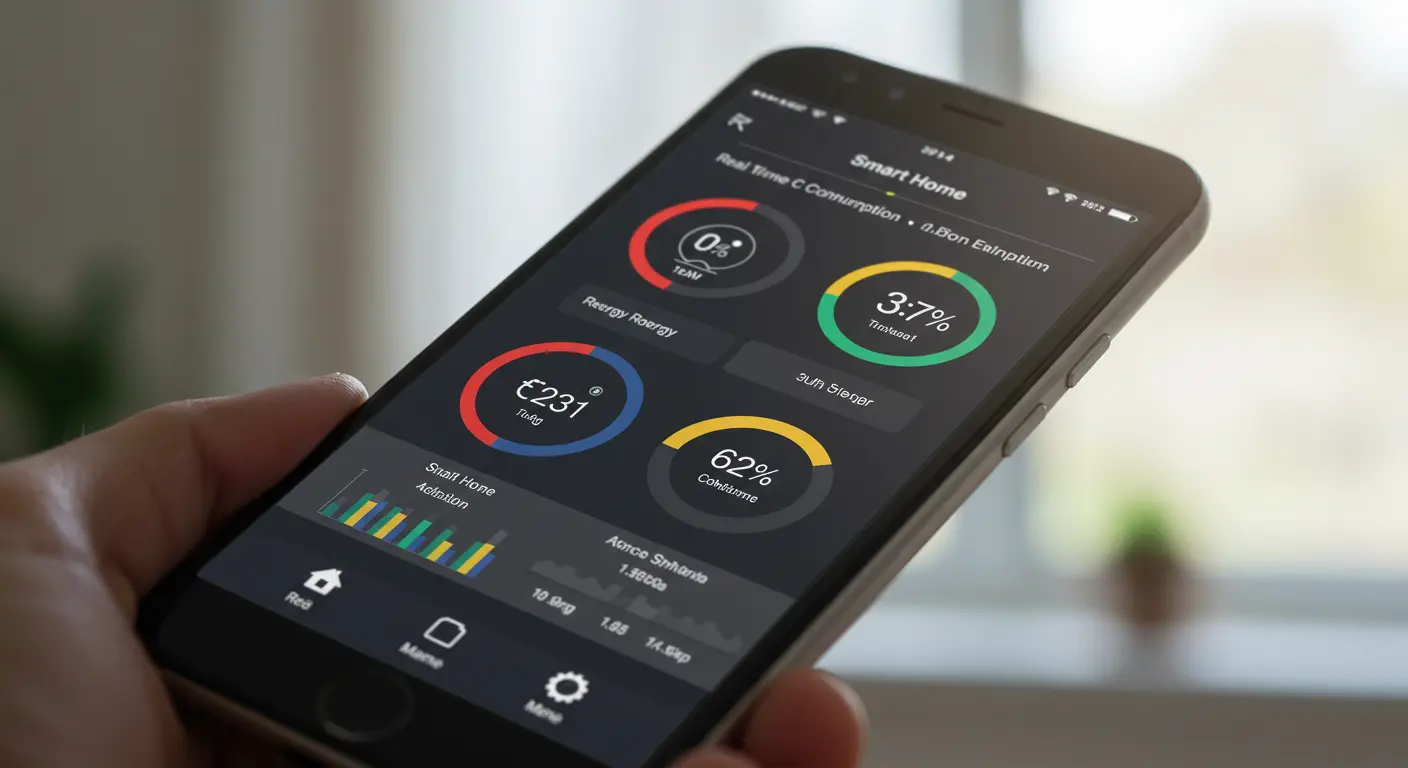
In a world full of gadgets and excessive energy consumption, many homes end up wasting resources and harming the environment. But it is possible to combine comfort, aesthetics, and environmental awareness through a smart and sustainable home. With the right technology, you save energy, reduce your ecological impact, and maintain the charm of a minimalist space.
In this article, we will explore efficient technological solutions that transform your routine, optimize resource usage, and create a more functional, beautiful home aligned with a conscious lifestyle.
The Concept of a Smart and Sustainable Home
A smart and sustainable home combines technology and environmental awareness to create a more efficient, comfortable home with a lower impact on the planet. The concept goes far beyond home automation: it involves integrating devices and systems that optimize the use of energy, water, and resources, without sacrificing the aesthetics and simplicity of minimalist design. This approach values every detail, from the choice of efficient appliances to how lighting and climate control are managed.
How minimalism connects with technology
Minimalism and smart technology share a common goal: to simplify life. While minimalism seeks to eliminate excesses and prioritize only the essential, technology acts as a tool to facilitate tasks and prevent waste.
Devices like virtual assistants, motion sensors, and automation systems allow residents to control the entire environment practically, without visually cluttering the space. This means fewer cables, fewer unnecessary appliances, and more integration between aesthetics and functionality. The result is a clean, organized environment aligned with a conscious lifestyle.
Reducing consumption and environmental impact
A smart sustainable home is not just modern—it is also a powerful ally in reducing energy and water consumption. With features like automated LED lighting, smart thermostats, and programmable outlets, it is possible to avoid unnecessary electricity waste and optimize equipment usage.
Additionally, real-time monitoring systems help identify waste patterns, allowing for immediate adjustments. This combination of technology and environmental awareness contributes to reducing the carbon footprint and promoting a more balanced lifestyle, where comfort and responsibility go hand in hand.
Essential Technologies for a Minimalist Smart Home
Creating a smart and sustainable home does not require a complete revolution in your residence—just adopt technological solutions that combine efficiency, aesthetics, and functionality. The key is to choose resources that truly add value, avoiding excesses that could compromise the harmony of a minimalist space.
Below, we present the main technologies that combine practicality, resource savings, and clean design.
Home automation for energy saving
Automation allows you to control lighting, climate, appliances, and even curtains centrally, either via an app or voice command.
- Presence sensors: turn on lights only when there is movement in the environment.
- Temperature programmers: maintain the ideal climate, avoiding unnecessary heating or air conditioning expenses.
- Automatic routines: turn off appliances at predefined times, reducing standby consumption.
These solutions not only optimize energy use but also bring more comfort and simplicity to daily life.
Smart lighting and remote control

Lighting is one of the elements that most influences consumption and the atmosphere of a space. With smart LED lamps, it is possible to:
- Adjust intensity and color temperature according to the current activity.
- Program schedules for turning on and off.
- Integrate with sensors and virtual assistants for automatic use.
The result is a versatile environment, always with the right amount of light, saving up to 80% energy compared to common lamps.
If you want to deepen your strategies to reduce consumption, also check out our article on how to save energy with smart devices in small spaces, with practical tips for any environment.
Connected and efficient appliances
Refrigerators, washing machines, and smart ovens are already part of many homes seeking efficiency and practicality. They stand out for:
- Remote monitoring via app, to adjust cycles and functions.
- Optimized energy and water consumption based on actual load and use.
- Maintenance alerts and preventive diagnostics, extending appliance lifespan.
By integrating connected appliances into an energy management system, you ensure more rational resource use and keep the space visually clean, as many models follow minimalist lines.
“If you want to transform your kitchen into a practical and modern space, discover how to choose smart appliances for a functional and minimalist kitchen without sacrificing aesthetics.”
Sustainable Solutions that Enhance Minimalist Design
A smart and sustainable home goes beyond automation: it incorporates resources that preserve the environment without compromising aesthetics. In minimalism, every element has function and purpose—and this also applies to ecological solutions, which can be integrated into the architectural project discreetly and elegantly.
Solar energy and renewable sources
Solar panels are one of the most effective investments to reduce dependence on the conventional electrical grid. In addition to generating clean energy, they:
- Significantly reduce electricity bills in the medium and long term.
- Have a durability of up to 25 years, with low maintenance.
- Can be integrated into the roof design, maintaining visual harmony.
For those looking to complement the energy matrix, small wind turbines and solar water heaters are also efficient alternatives.
Presence sensors and conscious water use
Sustainability also lies in responsible water use. Technologies such as:
- Faucets and showers with motion sensors, which release water only when necessary.
- Rainwater harvesting systems for irrigation and cleaning.
- Smart meters that identify leaks in real time.

These solutions prevent waste and can be implemented almost invisibly, preserving the clean and organized look characteristic of a minimalist space.
Device design and discreet integration
Today, many smart devices are designed with a focus on minimalist design. Smooth surfaces, neutral colors, and compact formats allow them to fit naturally into the environment.
- Virtual assistants with neutral fabric finishes that blend into the decor.
- Smart speakers that also function as lamps.
- Switches and control panels built into the walls, maintaining continuous lines.
“And if you want to combine efficiency and well-being, it’s worth exploring ideas for sustainable decor with plants to create a greener and more welcoming environment.”
Use of multifunctional furniture with built-in technology

Another way to integrate technology without creating visual clutter is to opt for multifunctional furniture.
- Tables and sideboards with built-in wireless charging stations.
- Shelves that hide hubs and routers behind discreet doors.
- Sofas and beds with integrated outlets and USB ports.
These features maintain functionality without exposing equipment, reinforcing the sense of order and spaciousness in the environment.
To learn about other ways to integrate technology without compromising aesthetics, see our 6 minimalist design tips with hidden technology to transform small spaces.
Long-Term Benefits
Adopting a smart and sustainable home is more than a technological trend—it’s an investment that translates into concrete gains for your wallet, daily comfort, and the planet. By combining minimalism and automation, you create a home that remains efficient and functional for many years, with low maintenance costs and high added value.
Financial savings
Smart systems help drastically reduce energy and water consumption, which directly reflects on the monthly bill.
- Solar panels can generate up to 100% of the necessary energy, eliminating electricity costs.
- Automated lighting and climate control prevent waste, optimizing use only when necessary.
- Consumption monitoring allows for quick and precise adjustments, avoiding extra expenses.
In the medium term, the value invested in sustainable technology returns in the form of accumulated savings.

Comfort, security, and quality of life
With automation, daily tasks become simpler: turning on lights, adjusting temperature, or closing curtains can be done with a tap on your phone or by voice command. Additionally:
- Security sensors offer real-time monitoring and immediate alerts.
- Remote control of systems ensures practicality even when away from home.
- Adaptable environments improve well-being, adjusting light, temperature, and sound to your moment.
This combination of practicality and personalization makes the home more welcoming and functional, without sacrificing minimalist elegance.
Step-by-Step Guide to Starting Your Smart and Sustainable Home
Transforming your residence into a smart and sustainable home might seem like a complex project, but with planning and strategic choices, it’s possible to start gradually, prioritizing what brings the most impact and savings. The secret is to adopt solutions that integrate well with your space and lifestyle.
1. Assess your needs and priorities
Before investing, diagnose what truly needs improvement: lighting, climate control, security, or water consumption. This analysis avoids unnecessary expenses and helps create a coherent plan aligned with your goals.
2. Start with the essentials
Begin with technologies that offer the quickest return:
- Smart LED bulbs
- Automated outlets and switches
- Presence sensors
These items are low-cost, easy to install, and have a quick impact on your energy bill.
3. Invest in long-term sustainable solutions
If your budget allows, move on to higher-impact resources:
- Solar panels
- Rainwater harvesting systems
- Connected and efficient appliances
4. Integrate everything with a central system
Centralizing control of all devices in a home automation hub or a single app ensures practicality and avoids the disorganization of multiple controls and apps.
5. Maintain minimalist aesthetics
Opt for devices with clean designs and install cables and equipment discreetly. Use custom furniture to embed appliances and create an organized and harmonious look.
Summary Checklist:
- Map real needs
- Start with basic automation
- Adopt sustainable solutions
- Integrate systems
- Maintain a clean aesthetic
Future Trends for Smart and Sustainable Homes
The smart home market is evolving rapidly, and in the coming years, new technologies promise to further enhance efficiency and reduce environmental impact. Some of the most promising trends include:
- Artificial Intelligence applied to energy management: systems that learn your habits and automatically adjust consumption and settings to save energy.
- Smart building materials: glass that regulates light and heat entry, green roofs, and advanced thermal insulation.
- Integration with electric vehicles: use of automotive batteries to store energy and power the home during peak hours.
- Connected and sustainable communities: entire neighborhoods with shared energy grids and collective environmental monitoring.
In addition to reinforcing sustainability, these trends point to a future where the home becomes a living organism, adaptable and fully aligned with the well-being of its residents.
How to Avoid Common Mistakes in Implementing a Smart Home
Many automation and sustainability projects fail due to hasty choices or lack of planning. To avoid frustrations:
- Do not buy impulsively – Evaluate if the device truly meets your needs before investing.
- Consider compatibility – Ensure that all equipment can be integrated into the same system.
- Do not neglect digital security – Protect your Wi-Fi network and devices against invasions by adopting strong passwords and regular updates.
- Avoid excessive devices – Remember that in minimalism, less is more; choose efficient and discreet solutions.
- Plan electrical and network infrastructure – Anticipate power and internet points to avoid visible cables.
By following these guidelines, you can ensure that the investment is functional, secure, and aesthetically harmonious.
Comparative Table – Sustainable Technological Solutions in Smart Homes
| Technological Solution | Sustainable Benefit | Impact on Minimalism |
|---|---|---|
| Smart LED lighting | Reduces energy consumption by up to 80% and increases lamp lifespan | Discreet design and possibility to adjust color and intensity for each environment |
| Solar panels | Clean energy generation, reduced dependence on the electrical grid, and long-term savings | Architectural integration into the roof or facades |
| Smart outlets and switches | Prevent standby consumption and allow remote control | Eliminates visible cables and offers a clean design |
| Presence sensors | Activate lights or systems only when necessary, preventing waste | Small and discreet, they do not compromise aesthetics |
| Rainwater harvesting systems | Conscious and sustainable water use for irrigation and cleaning | Can be built-in or hidden, maintaining a clean look |
Conclusion – Uniting Technology, Sustainability, and Minimalism
Transforming your home into a smart and sustainable home is not just a matter of modernity, but a concrete step towards a more balanced, economical, and conscious lifestyle. By adopting resource-optimizing technologies, you reduce waste, minimize your environmental impact, and also enjoy more comfort and practicality in your daily life.
Minimalism becomes the link that connects functionality and aesthetics, ensuring that each resource has a clear purpose and that the design remains clean and harmonious. Whether starting with small automations or investing in long-term sustainable solutions, each step contributes to a smarter, more beautiful home aligned with the values of a life with less excess and more meaning.
